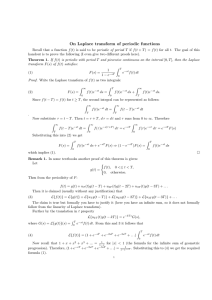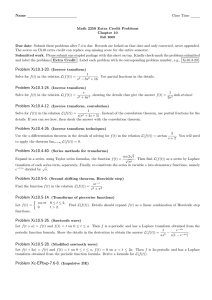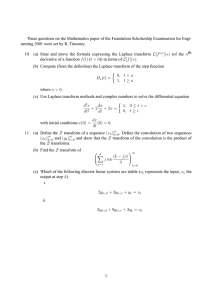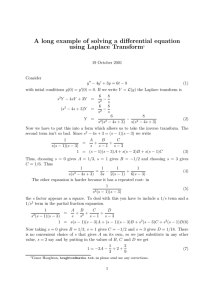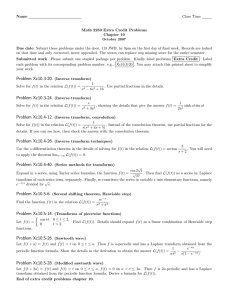Homework Assignment 7 in Differential Equations, MATH308
advertisement
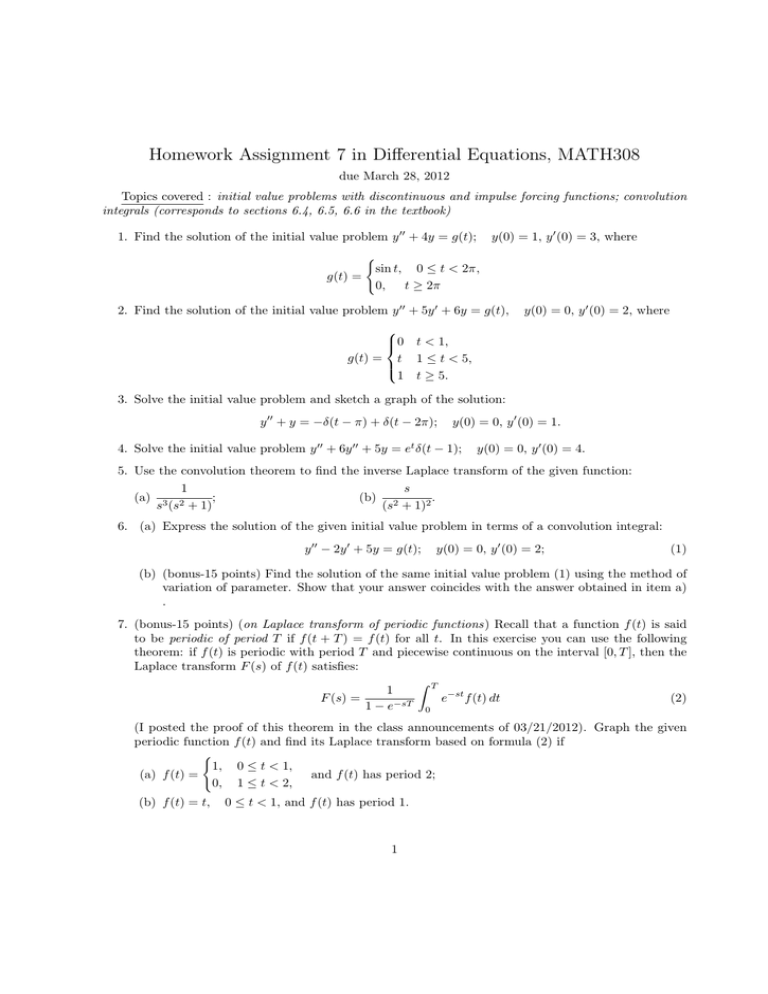
Homework Assignment 7 in Differential Equations, MATH308 due March 28, 2012 Topics covered : initial value problems with discontinuous and impulse forcing functions; convolution integrals (corresponds to sections 6.4, 6.5, 6.6 in the textbook) 1. Find the solution of the initial value problem y 00 + 4y = g(t); ( g(t) = y(0) = 1, y 0 (0) = 3, where sin t, 0 ≤ t < 2π, 0, t ≥ 2π 2. Find the solution of the initial value problem y 00 + 5y 0 + 6y = g(t), 0 g(t) = t 1 y(0) = 0, y 0 (0) = 2, where t < 1, 1 ≤ t < 5, t ≥ 5. 3. Solve the initial value problem and sketch a graph of the solution: y 00 + y = −δ(t − π) + δ(t − 2π); y(0) = 0, y 0 (0) = 1. 4. Solve the initial value problem y 00 + 6y 00 + 5y = et δ(t − 1); y(0) = 0, y 0 (0) = 4. 5. Use the convolution theorem to find the inverse Laplace transform of the given function: s 1 ; (b) 2 . (a) 3 2 s (s + 1) (s + 1)2 6. (a) Express the solution of the given initial value problem in terms of a convolution integral: y 00 − 2y 0 + 5y = g(t); y(0) = 0, y 0 (0) = 2; (1) (b) (bonus-15 points) Find the solution of the same initial value problem (1) using the method of variation of parameter. Show that your answer coincides with the answer obtained in item a) . 7. (bonus-15 points) (on Laplace transform of periodic functions) Recall that a function f (t) is said to be periodic of period T if f (t + T ) = f (t) for all t. In this exercise you can use the following theorem: if f (t) is periodic with period T and piecewise continuous on the interval [0, T ], then the Laplace transform F (s) of f (t) satisfies: Z T 1 F (s) = e−st f (t) dt (2) 1 − e−sT 0 (I posted the proof of this theorem in the class announcements of 03/21/2012). Graph the given periodic function f (t) and find its Laplace transform based on formula (2) if ( 1, 0 ≤ t < 1, (a) f (t) = and f (t) has period 2; 0, 1 ≤ t < 2, (b) f (t) = t, 0 ≤ t < 1, and f (t) has period 1. 1


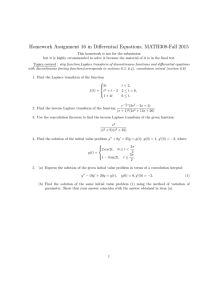


![2E2 Tutorial sheet 4 Solutions [Wednesday November 15th, 2000]](http://s2.studylib.net/store/data/010571895_1-4b7c089f1dab36d3bb1b5c9023a4e8f2-300x300.png)
